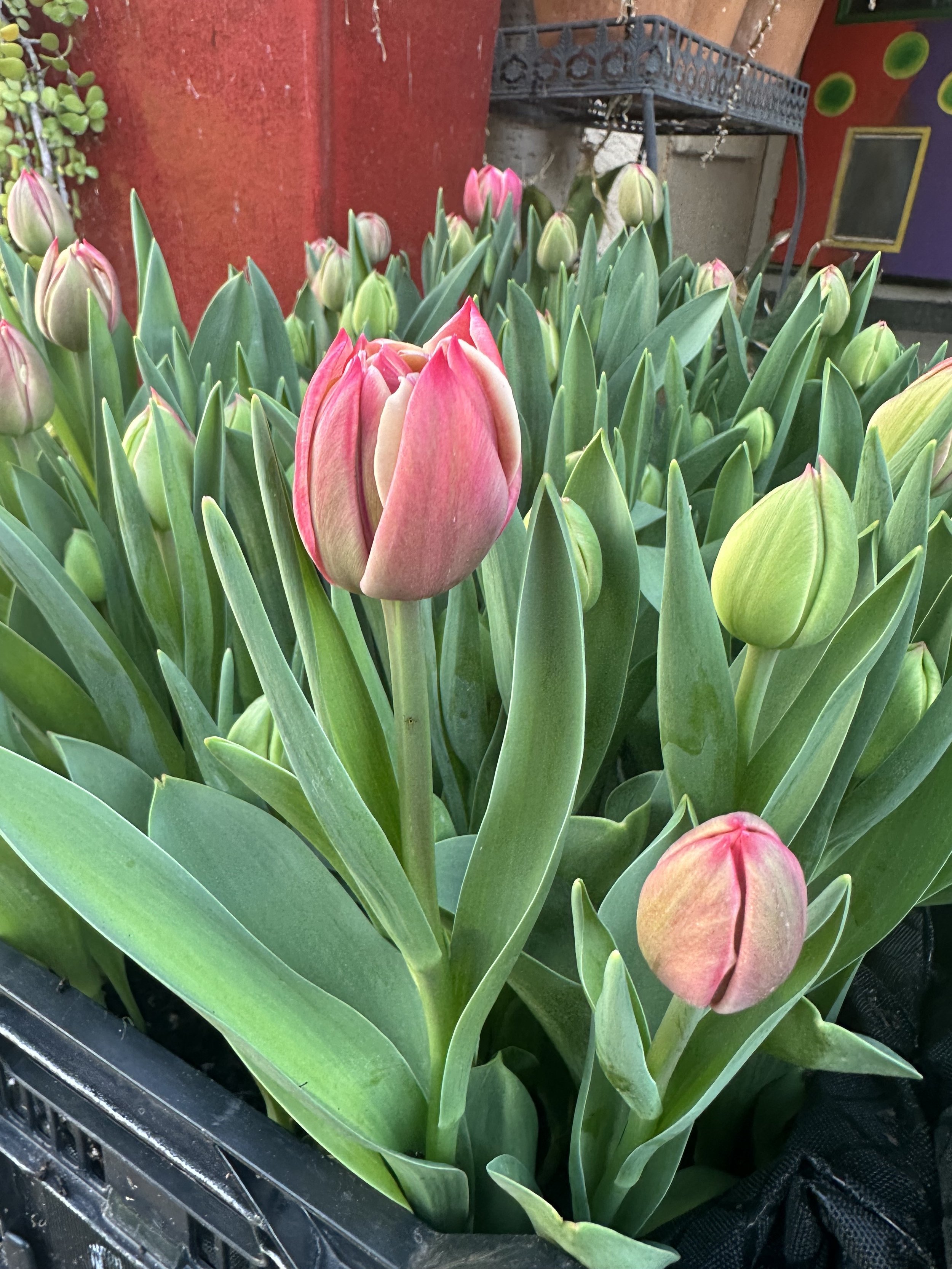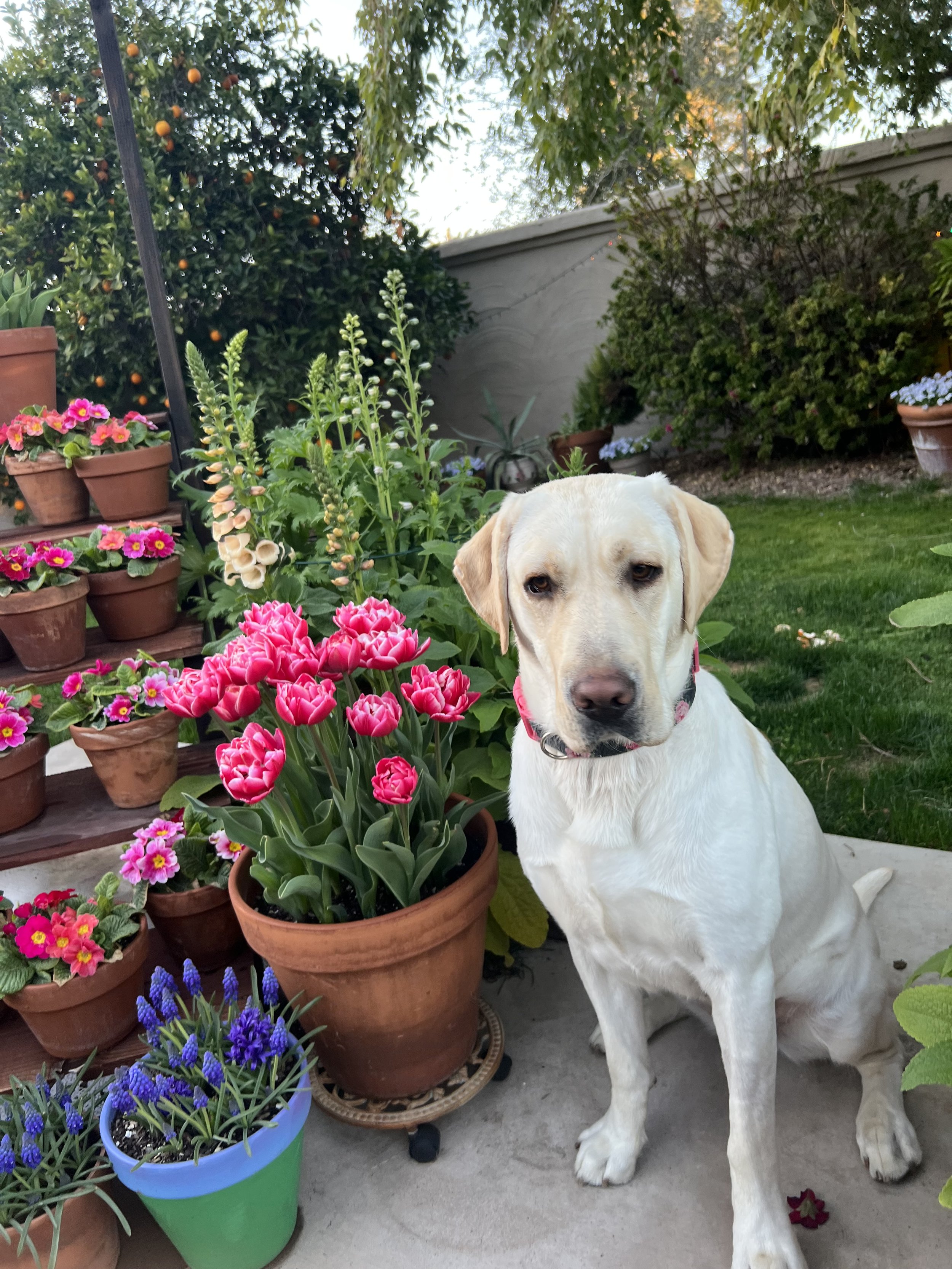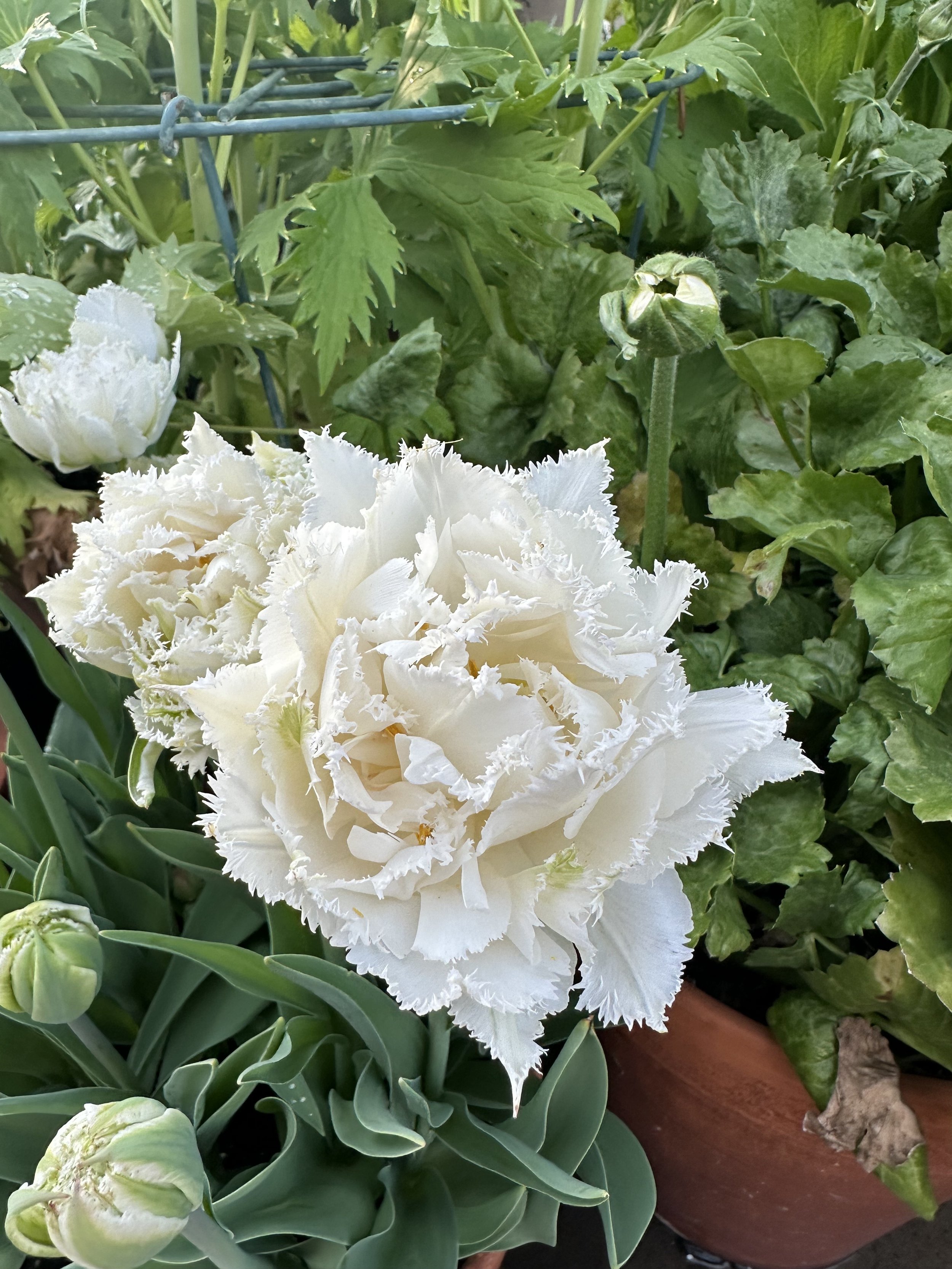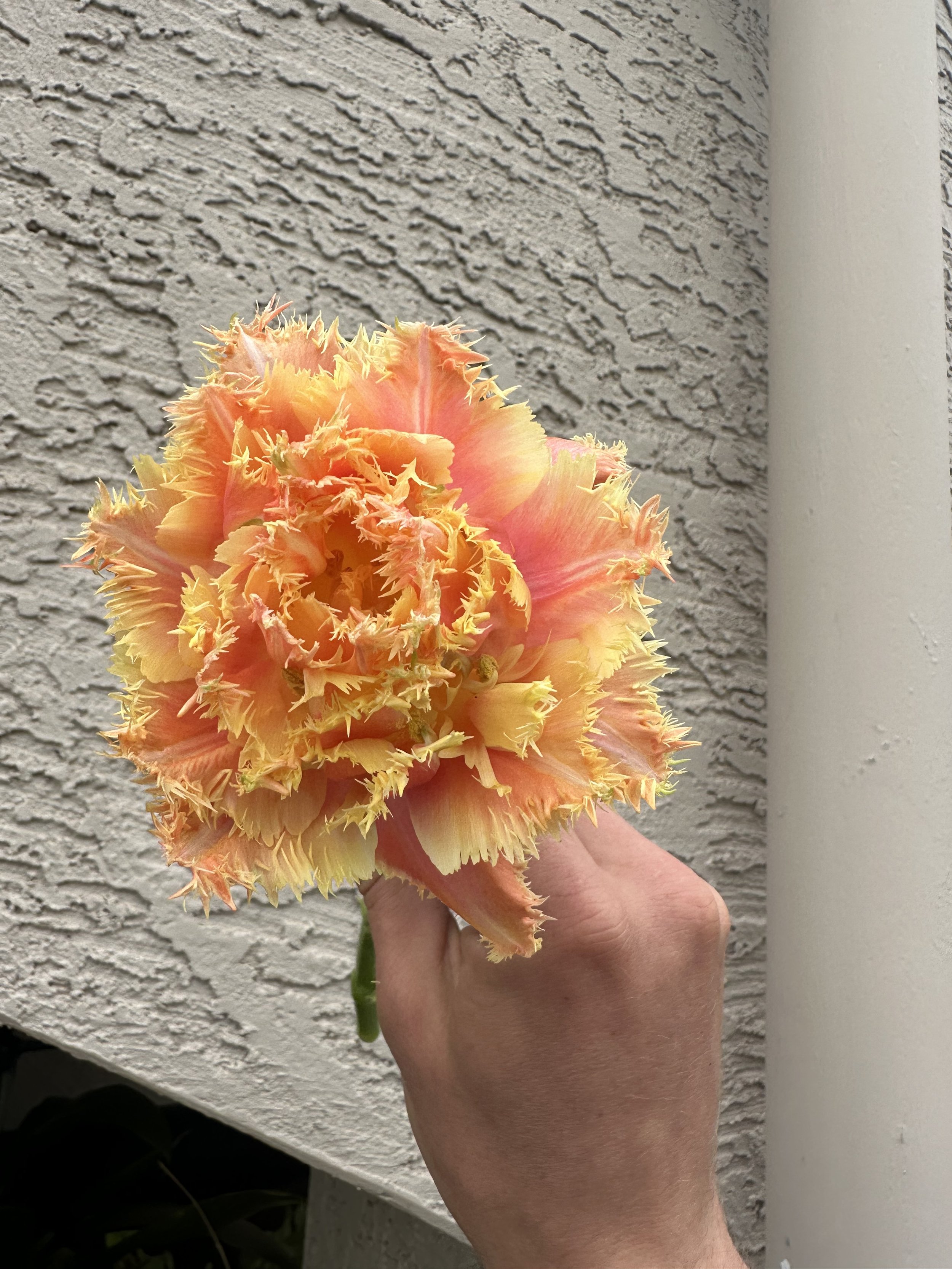Tulips
Tulips? In Phoenix? yes! People are usually shocked when I tell them they can grow these beauties here in the desert. They are treated as annuals here, but they are totally worth the time and effort. I'm going to explain some crucial steps on how to grow these flowers for the best results and maximum lifespan. If planned properly, tulips would be the perfect addition to your valentines day bouquets.
Purchasing Bulbs:
Tulips Originate in Asia where they receive long, cold winters. It's important to recreate this environment by giving your tulips ‘Chill hours’ before planting. You can chill your tulips in a fridge away from ethylene gas-emitting fruits, but usually, fridges are still too wet to properly store your tulips. The best way to ensure proper flowering tulips is to get them professionally pre-chilled from your supplier. They usually put the tulips into the chiller in September and they are ready to plant out in December. They need 14-16 weeks of chill hours with temperatures in the upper 30’s. We offer Chilled bulbs at the proper time to plant in warm climates (zone 8 & up) in December. Shop our pre-cooled bulb here.
When to plant:
I recommend planting Tulips from mid-December to mid-January. Most tulips need around 14 weeks of ‘chill time’. They typically take 6-8 weeks to bloom after planting, which is great if you're looking for quick flowers to cut from in the garden.
Where to plant:
Tulips do NOT like the heat. It's important to find a space that doesn't get full, hot sun to plant these bulbs. I like to plant them in containers on the east side of my house. 4-6 hours of morning sun is typically ideal for tulips. You can give them less and they will be fine. Ive planted them in bright indiret sunlight in crates the help encourage stems to ‘stretch’ aka get longer for cut flower use.
I like to plant them in containers or crates. They can be easily moved into the shade in the event of a heat wave.
How to plant:
I typically plant my tulips 4” deep in containers and 2” deep in crates. They like to be in loose, well-draining soil. I typically plant them in containers, or raised beds for this reason.
After planting your bulbs it's important to water them. Water only when the soil dries out. Over watering, or planting in heavy clay solid could increase your risk for rot.
Crate growing:
If you can get your hands on a bulb or milk crate, they are a great way to force bulbs for cut flowers. Line the crate with landscape fabric (usually the cheapest i can find) and place 2” of soil at the bottom. Line bulbs in the crate, a standard bulb crate can fit 90 bulbs. Top of the bulbs with another 2” of soil.
If im harvesting the bulbs for cuts, I like to put them right when the color starts to show. I pull the stem out of the crate, bulb and all, and place it in my cooler. When I am ready to arrange it, I will cut off the bulb and place the stem in water. Harvesting at the right time will ensure the best vase life. They can be stored in your cooler for weeks if picked properly. ( pictured below)
Takeaways:
Tulips DO require a little extra TLC compared to other flowers but they are totally worth it. My advice? Don't overdo it. Get enough bulbs to fill a few pots and enjoy them. Then brag to all the nay-sayers that you were able to grow them!
Pot tulips and our puppy rose with primroses, muscari, foxgloves and delphiniums in the back.
Tulip ‘Daytona’ offers a beautiful elegant double fringe white moment. Shop here.
Tulip ‘Brisbane’ offers a great orange double fringe tulip moment and im LIVING for it. Best seller of 2023 season with good reason.
Tulip ‘Dream Touch’ has a beautiful purple tone, with a white ‘Glow’ for their margins.
Tulip ‘Daytona’ offers a beautiful, elegant white tulip, which double fringe petals. These would be stunning in any bridal bouquet. We paired them with alyssum in our pots for a clean white paring of the two.











